I recently visited a factory where poor compressed air piping caused constant equipment failures. This experience showed me how crucial proper plumbing is for pneumatic systems.
Compressed air plumbing is vital because it directly affects system efficiency, energy costs, and equipment reliability. The right piping materials, proper layout design, correct sizing, and regular maintenance work together to deliver clean, dry air at consistent pressure to all points of use, minimizing energy waste and downtime.
Let’s examine how to build an efficient and reliable compressed air system.
What are the Best Piping Materials for Efficient Compressed Air Systems?
Many factories use wrong piping materials, leading to air leaks and contamination. I’ve seen how material choice impacts overall system performance.
The best piping materials for compressed air systems are aluminum, stainless steel, and certain plastics like PEX-AL-PEX. These materials resist corrosion, prevent internal scaling, and maintain smooth interior surfaces that minimize pressure drop. They also withstand high pressures and are easy to install with leak-free connections.
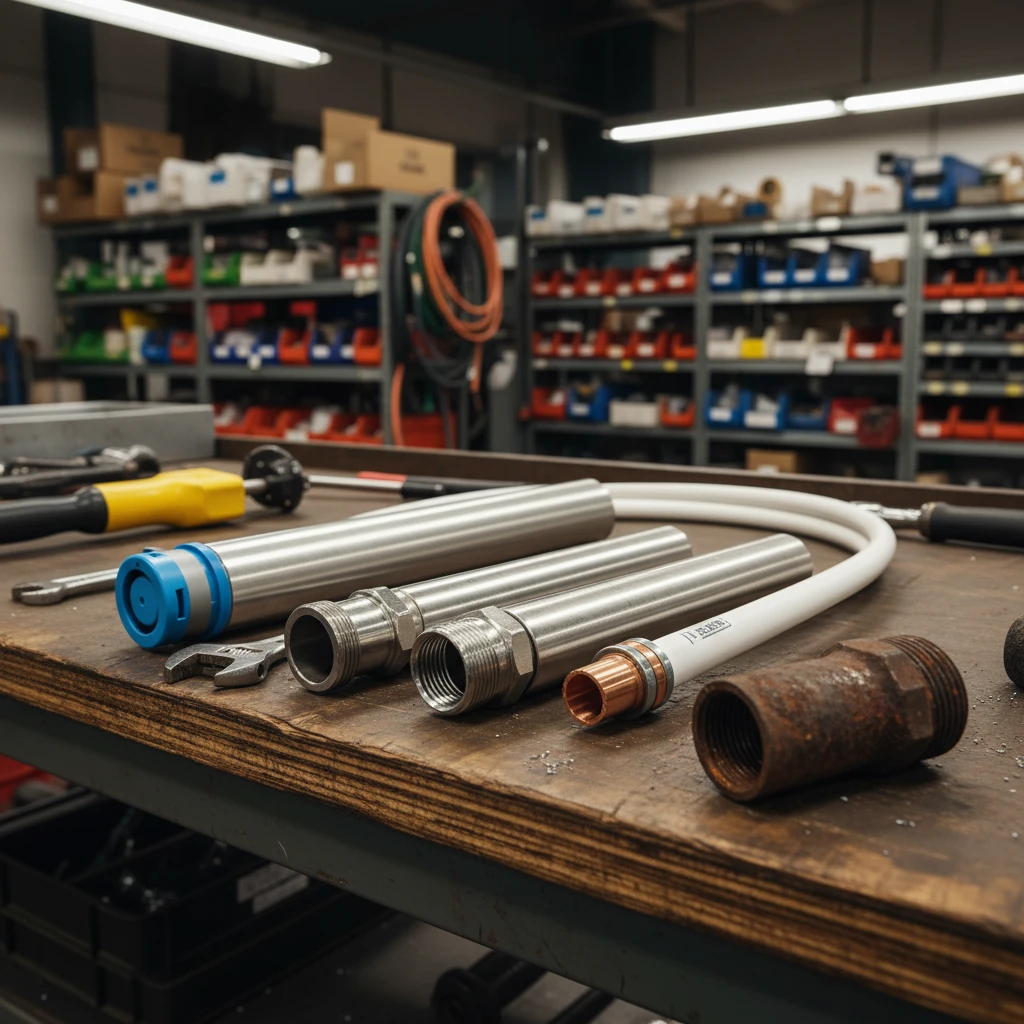
Understanding Material Properties
Choosing the right piping material affects your system’s efficiency, maintenance costs, and air quality. Different materials offer various advantages for compressed air applications.
Aluminum piping has become very popular for new installations. It’s lightweight, corrosion-resistant, and easy to install. The smooth interior surface reduces friction and pressure drop. Aluminum systems use push-to-connect fittings that install quickly without special tools. This material won’t rust, so it keeps the air clean and maintains its smooth interior over time.
Stainless steel offers excellent durability and corrosion resistance. It’s ideal for harsh environments where moisture or chemicals might be present. While more expensive than aluminum, stainless steel provides long-term reliability in demanding conditions. It’s often used in food processing, pharmaceutical, and chemical industries where air purity is critical.
Comparing Plastic and Traditional Options
Some plastic materials work well for compressed air. PEX-AL-PEX (cross-linked polyethylene with aluminum barrier) combines flexibility with strength. It resists corrosion and is easy to install. However, not all plastics are suitable – some can become brittle over time or aren’t rated for compressed air pressures.
Traditional materials like black iron and galvanized steel have significant drawbacks. They corrode internally, creating rust that contaminates the air and clogs equipment. The rough interior surface increases friction and pressure drop. They’re also difficult to install and more prone to leaks.
Material Comparison Table
| Material | Key Advantages | Limitations | Best Applications |
|---|---|---|---|
| Aluminum | Lightweight, corrosion-resistant, easy installation, low pressure drop | Higher initial cost | General manufacturing, workshops |
| Stainless Steel | Excellent corrosion resistance, durable, maintains air purity | Highest cost, requires skilled installation | Food, pharmaceutical, corrosive environments |
| PEX-AL-PEX | Flexible, corrosion-resistant, easy to install | Pressure and temperature limitations | Small shops, retrofit applications |
| Black Iron | Low material cost, readily available | Corrodes easily, difficult to install, high maintenance | Not recommended for new installations |
Installation and Maintenance Considerations
The installation method greatly affects system performance. Look for materials that offer leak-free joining systems. Aluminum systems with O-ring sealed fittings prevent leaks better than threaded connections. Plastic systems with crimp or compression fittings also provide reliable seals.
Maintenance requirements vary significantly between materials. Corrosion-resistant materials like aluminum and stainless steel need minimal maintenance. Traditional steel pipes require regular draining and often need replacement due to internal corrosion. Choosing the right material reduces long-term maintenance costs and improves system reliability.
How to Design Compressed Air Plumbing Layouts to Minimize Pressure Drop?
I’ve seen many facilities with poor layout designs causing pressure problems. Proper planning makes a huge difference in system performance.
To minimize pressure drop, design compressed air plumbing with a looped main layout rather than dead-end lines. Keep main pipes large enough to handle total airflow, use gradual bends instead of sharp elbows, place filters and dryers close to use points, and ensure proper slope for drainage. These steps maintain consistent pressure throughout the system.

Understanding Pressure Drop Causes
Pressure drop occurs when air encounters resistance while moving through pipes. Every fitting, bend, and section of pipe causes some pressure loss. The goal is to minimize these losses through smart design.
The main causes of pressure drop include excessive pipe length, too many fittings, sharp bends, undersized pipes, and obstructions like moisture or scale buildup. Even a small pressure drop can significantly increase energy costs because compressors must work harder to maintain required pressure.
Loop System vs Dead-End Layout
A looped main layout is the most effective way to minimize pressure drop. In this design, the main pipe forms a complete circle around your facility. Air can flow from both directions to any use point, effectively doubling the available pipe diameter. This reduces air velocity and friction losses.
Dead-end layouts (also called branch systems) have a single main pipe with branches coming off it. The air at the end of the line must travel the farthest distance and often experiences the highest pressure drop. Equipment at the end of long dead-end runs may not receive adequate pressure.
Layout Comparison Table
| Layout Type | Advantages | Disadvantages | Pressure Drop |
|---|---|---|---|
| Looped Main | Balanced pressure, redundant paths, expandable | Higher initial cost, more complex planning | Lowest (30-50% less than branch) |
| Branch Main | Simple design, lower initial cost | Unbalanced pressure, limited expansion | Highest, especially at line ends |
| Grid System | Good pressure balance, flexible expansion | Complex design, highest cost | Low to moderate |
Practical Design Tips
Start with proper pipe sizing based on your maximum air demand, not just current needs. Include room for future expansion. Use larger pipes for main lines and reduce size only after significant branch points. This approach reduces air velocity and friction losses.
Minimize the number of fittings and use gradual bends instead of sharp elbows. Each 90-degree elbow creates as much pressure drop as several feet of straight pipe. Use 45-degree elbows or sweep bends where direction changes are necessary.
Place air treatment equipment strategically. Install main filters and dryers near the compressor room for general protection, but consider point-of-use filters for sensitive equipment. Ensure the system has proper slope (about 1% grade) toward drain points to remove condensation automatically.
Why Does Proper Pipe Sizing Impact Energy Efficiency in Pneumatic Systems?
Many facility managers don’t realize that undersized pipes waste significant energy. I’ve measured systems where proper sizing reduced energy costs by 25%.
Proper pipe sizing impacts energy efficiency because undersized pipes create high air velocity, increasing friction and pressure drop. For every 2 psi increase in pressure drop, energy consumption rises by about 1%. Correctly sized pipes maintain lower velocity, reduce friction losses, and allow compressors to operate at lower pressure settings.
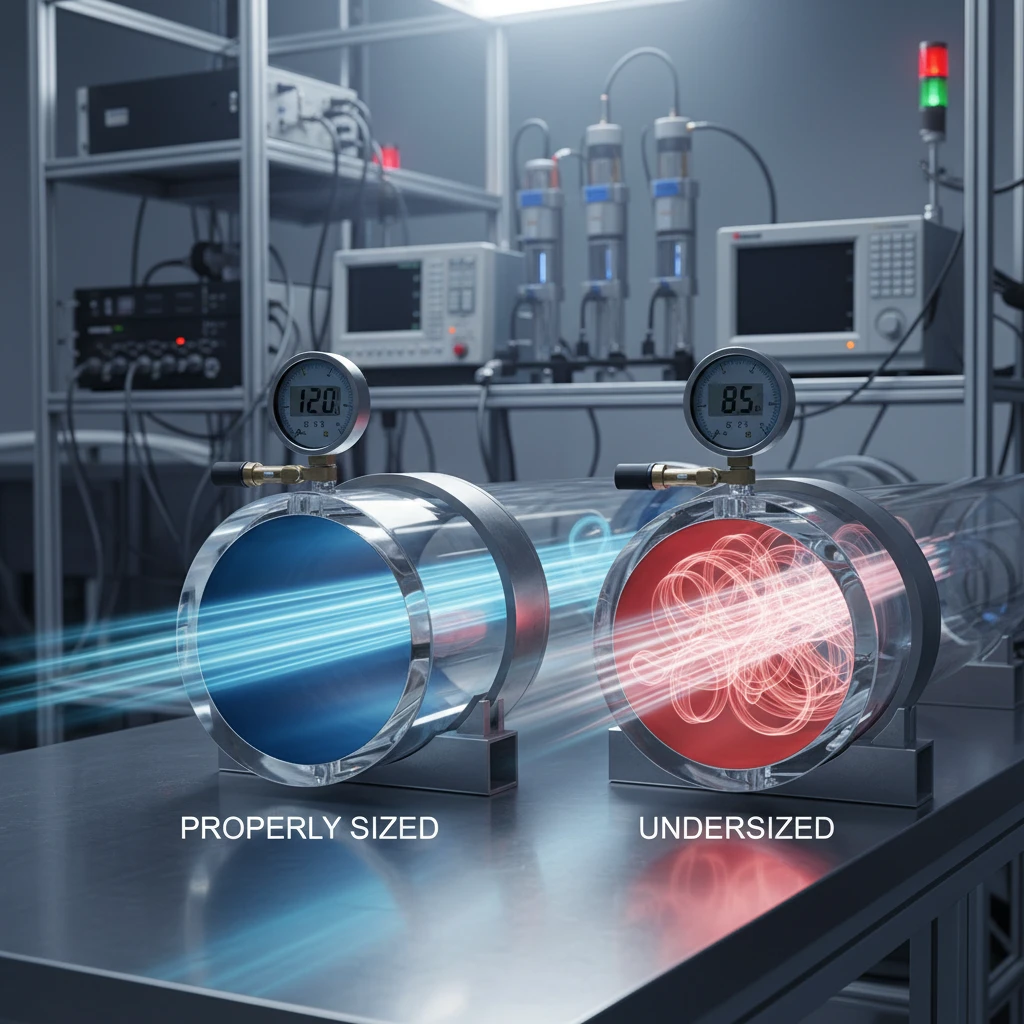
The Physics of Air Flow
Understanding how air moves through pipes helps explain why sizing matters. Compressed air contains energy in the form of pressure. As air moves through pipes, friction converts some of this energy into heat, reducing the pressure available at point of use.
Air velocity is the key factor. When pipes are too small, air must move faster to deliver the required volume. Higher velocity creates more turbulence and friction. The relationship isn’t linear – doubling the air velocity more than doubles the friction loss. Keeping velocity between 20-30 feet per second optimizes efficiency.
Energy Cost Calculations
The energy impact of pressure drop is significant. A typical industrial air compressor uses about 8 horsepower for every 100 cfm of air delivered. Each 2 psi of additional pressure drop requires about 1% more energy. In a 100 horsepower system, a 10 psi pressure drop from undersized piping could waste 10-15 horsepower continuously.
Consider the financial impact: A 100 horsepower compressor running 8,000 hours annually at $0.10 per kWh costs about $60,000 per year to operate. A 10% energy reduction from proper pipe sizing saves $6,000 annually. The energy savings often pay for pipe replacement within 1-2 years.
Pipe Sizing Guidelines Table
| Pipe Size (inches) | Maximum CFM at 100 psi | Recommended Velocity (fps) | Pressure Drop per 100 ft (psi) |
|---|---|---|---|
| 1/2 | 30-40 | 20-25 | 2-4 |
| 3/4 | 70-80 | 20-25 | 1-2 |
| 1 | 150-160 | 20-30 | 1-2 |
| 1-1/2 | 300-400 | 25-30 | 0.5-1 |
| 2 | 600-700 | 25-30 | 0.3-0.6 |
| 3 | 1,500-1,600 | 25-30 | 0.1-0.3 |
Future-Proofing Your System
When sizing pipes, consider future expansion and peak demands. Many facilities make the mistake of sizing pipes for current needs only. As you add equipment, undersized pipes become a bottleneck that’s expensive to fix later.
Include safety factors in your calculations. Account for the distance from compressor to farthest point of use, number of fittings, and potential future growth. It’s better to install slightly oversized pipes than to deal with chronic pressure problems later. Oversized pipes have minimal impact on efficiency, while undersized pipes waste energy continuously.
What Maintenance Practices Ensure Reliability in Compressed Air Plumbing?
I’ve found that regular maintenance prevents most compressed air problems. A simple checklist can save thousands in downtime and repairs.
Regular maintenance ensures reliability through daily water drainage, quarterly leak inspections, annual pressure drop measurements, and periodic internal inspections. These practices prevent moisture damage, minimize energy waste from leaks, identify developing problems early, and extend the system’s lifespan while maintaining air quality.
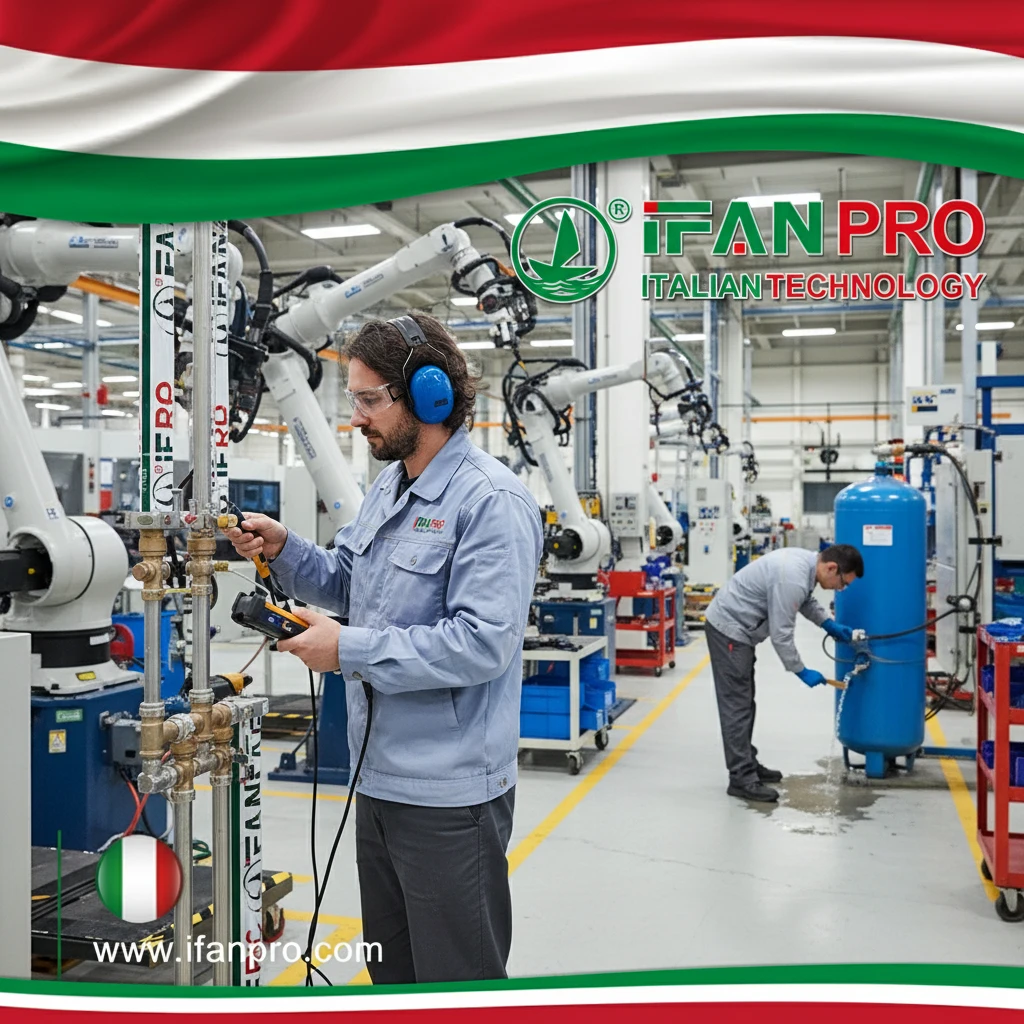
Essential Daily and Weekly Tasks
Consistent routine maintenance prevents small problems from becoming major failures. The most critical daily task is draining moisture from receivers, dryers, and filters. Water in the system causes corrosion, washes away lubricants, and damages equipment.
Install automatic drain traps on all low points and moisture collection points. Check these weekly to ensure they’re operating correctly. Manual drains require daily attention, which often gets overlooked in busy facilities. Also, check compressor oil levels and air intake filters weekly. Clean filters improve efficiency and extend compressor life.
Leak Detection and Repair
Air leaks represent the biggest source of energy waste in most systems. A single 1/8-inch hole at 100 psi can waste over $1,000 annually in energy costs. Most facilities have leaks totaling 20-30% of their compressed air production.
Conduct formal leak surveys at least quarterly. The best method is using ultrasonic leak detectors, which can find leaks even in noisy environments. Tag all leaks found and prioritize repairs based on size. Train operators to report leaks they notice during normal operations. Remember that leaks tend to increase over time, so regular detection is essential.
Maintenance Schedule Table
| Task | Frequency | Procedure | Tools Needed |
|---|---|---|---|
| Drain moisture | Daily | Open drain valves until air blows clear | Basic hand tools |
| Check pressure drop | Monthly | Measure across filters and dryers | Pressure gauge |
| Leak survey | Quarterly | Systematic inspection of all piping | Ultrasonic detector |
| Filter element change | 6-12 months | Replace based on pressure drop | New filters |
| Internal inspection | Annual | Examine pipe interiors for corrosion | Borescope or cutouts |
| System pressure test | Annual | Test entire system at maximum pressure | Pressure gauge |
Advanced Maintenance Procedures
Annual comprehensive inspections catch problems before they cause downtime. Use a borescope to examine pipe interiors without cutting the pipe. Look for corrosion, scale buildup, or damage. Measure pressure drops across different system sections to identify developing restrictions.
Document all maintenance activities and measurements. Tracking pressure drop trends over time helps predict when filters need replacement or when pipes need cleaning. Keep records of leak surveys to identify problem areas that need design improvements.
Consider professional energy audits every 2-3 years. Certified auditors use sophisticated equipment to measure flow, pressure, and power consumption simultaneously. They can identify optimization opportunities that aren’t visible during normal operations.
Conclusion
Proper compressed air plumbing requires the right materials, smart design, correct sizing, and regular maintenance. For reliable pneumatic piping solutions, choose IFAN’s high-quality compressed air pipes and fittings.

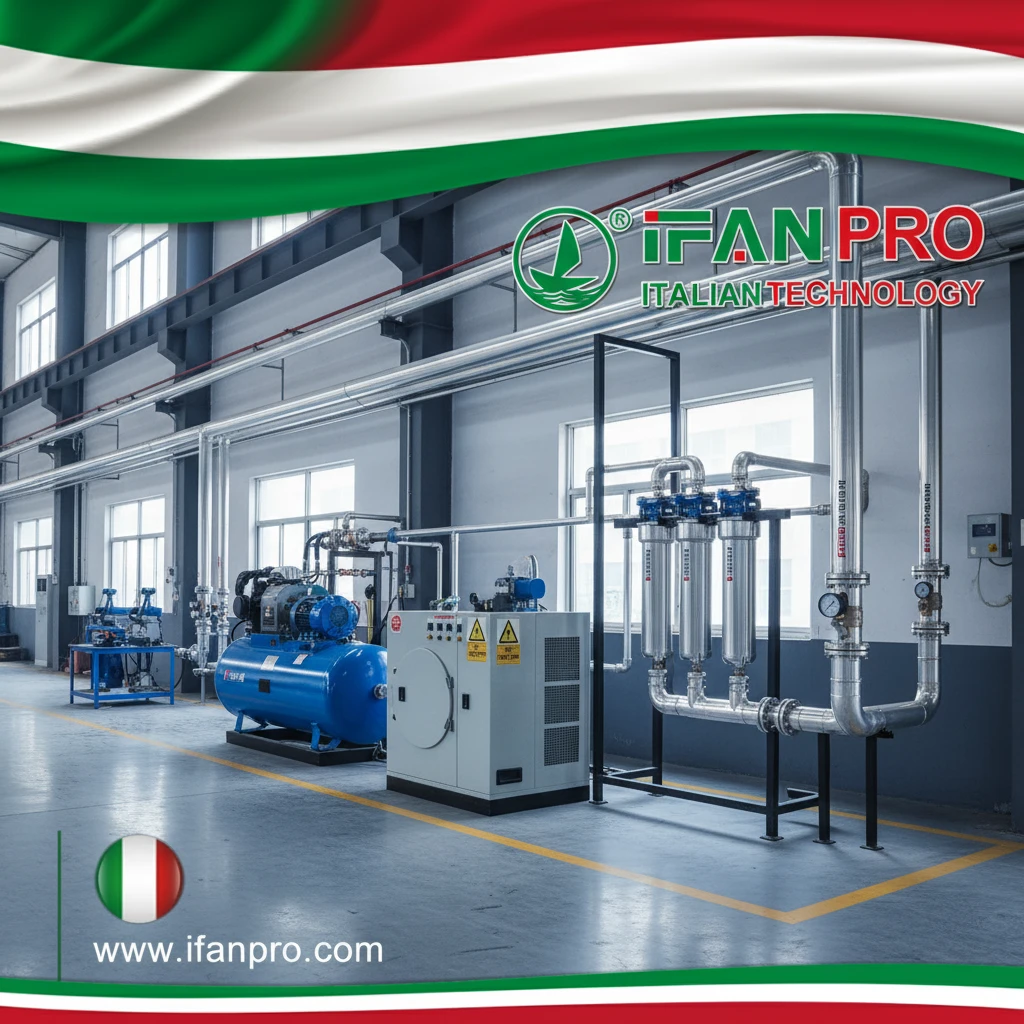
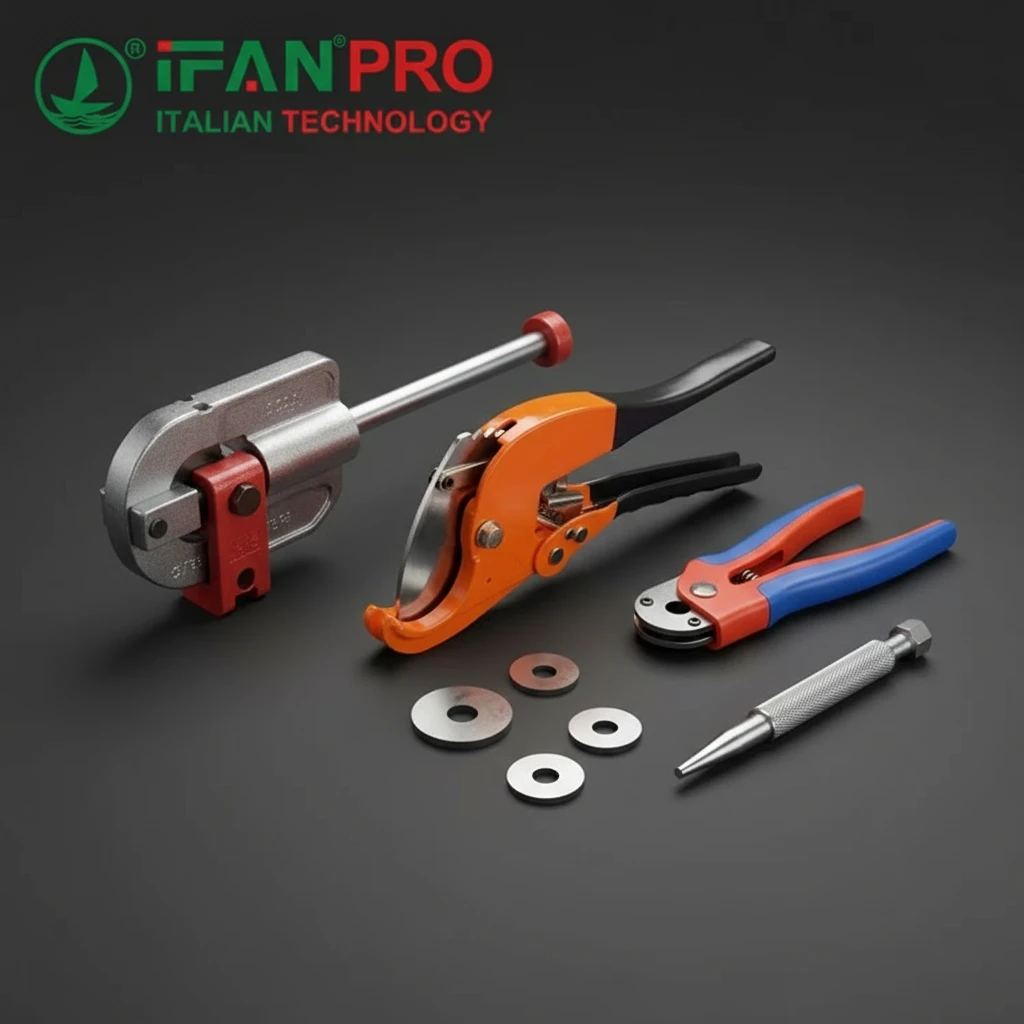

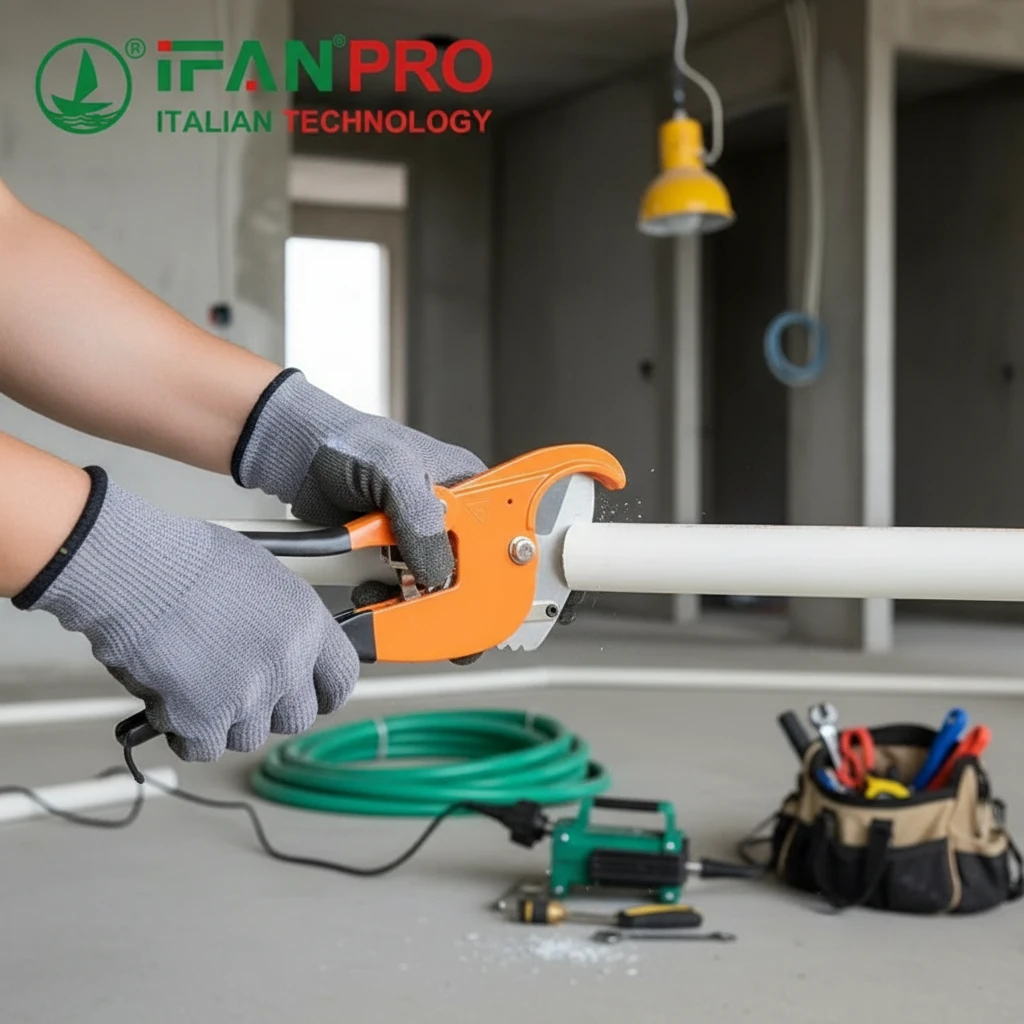









Recent Comments